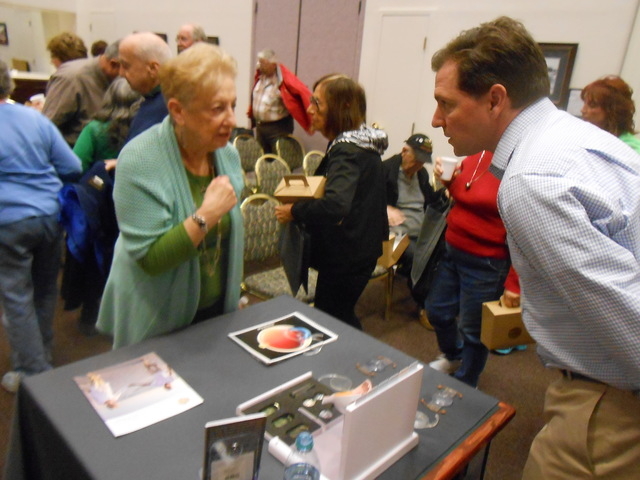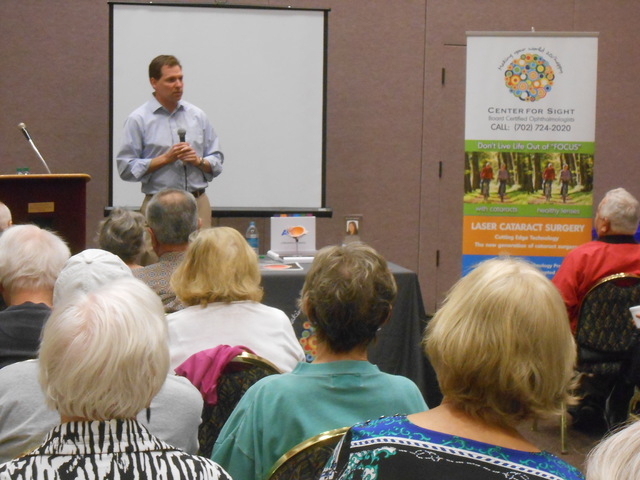Modern laser surgeries improve outlook for cataracts patients
Sun City Summerlin residents had a chance to learn facts about cataracts at a Lunch & Learn event Jan. 8 at Desert Vista Community Center, 10360 Sun City Blvd. The speaker was Dr. Adam Schwartz with Center For Sight.
He had good news and bad. The bad news: He said virtually everyone will get cataracts; it’s just a matter of time. According to the National Eye Institute, by age 80, more than half of all Americans will have a cataract or had cataract surgery.
The good news: Medical advancements mean laser surgery is now available.
“There’s no better time to have cataracts, because we have options now that we didn’t have five years ago,” Schwartz said, adding that computer-assisted laser surgery is taking the place of traditional surgery with a scalpel.
“There’s no surgeon in the world who can be as accurate or as good as the laser surgery,” he said.
Cataracts are a clouding of the normally clear lens of your eye. They grow gradually and may not be apparent at first. Those with cataracts will notice blurriness, halos around bright lights and colors not being as vivid as before. Some people with cataracts stop driving at night because they can’t see well in the dark.
The surgery is done on an outpatient basis. The patient is prepped and put into a twilight state of unconsciousness. The surgery takes about 15 minutes, Schwartz said.
Attendees had different reasons for being there.
“I’ve had cataract surgery, and I want to keep up with the healthy things that I’m supposed to do,” said Marie Shelton, who had the surgery in the fall of 2013 in her left eye. “And the fact that the other eye, at some point, may need surgery, I want to know what I should look out for.”
Little can be done to delay the condition. Schwartz suggested no smoking, getting exercise, eating well and wearing sunglasses with UV protection.
Fran Abrams knows she has cataracts and visits her doctor regularly to gauge their progression.
“ I don’t see anything different, but I know I have them,” she said. “It’s a huge concern. I don’t have any great fear, but I’ll have them done when the doctor says to.”
The best results come if both eyes are treated, Schwartz said. If both eyes have cataracts, only one will undergo surgery at a time. This is mostly done to see how the patient rebounds. Cataract surgery can address astigmatism at the same time. It can also implant drainage stents for those with glaucoma.
According to the National Eye Institute, direct medical costs for cataract treatment are estimated at $6.8 billion annually.
Another advancement is a lens with a hinge aspect. As the eye muscles move, the lens is flexed, allowing for more seamless sight at various distances. Schwartz said that it was not effective when it came to reading fine print or seeing up close.
The surgery is not a cure-all. It will restore sight but not to the point where you see as well “as when you were 17 years old. Going from an eye that sees things poorly … to one that’s been repaired, generally, the patient is like, ‘Wow, I can see again.’ Generally, they’re very happy,” Schwartz said. “The happiest are the ones who go into surgery knowing the drawbacks.”
Contact Summerlin Area View reporter Jan Hogan at jhogan@viewnews.com or 702-387-2949.





























